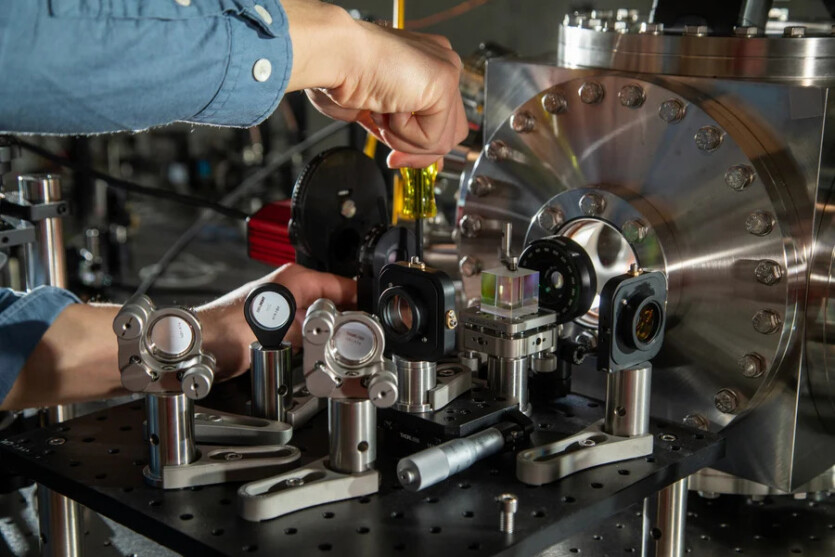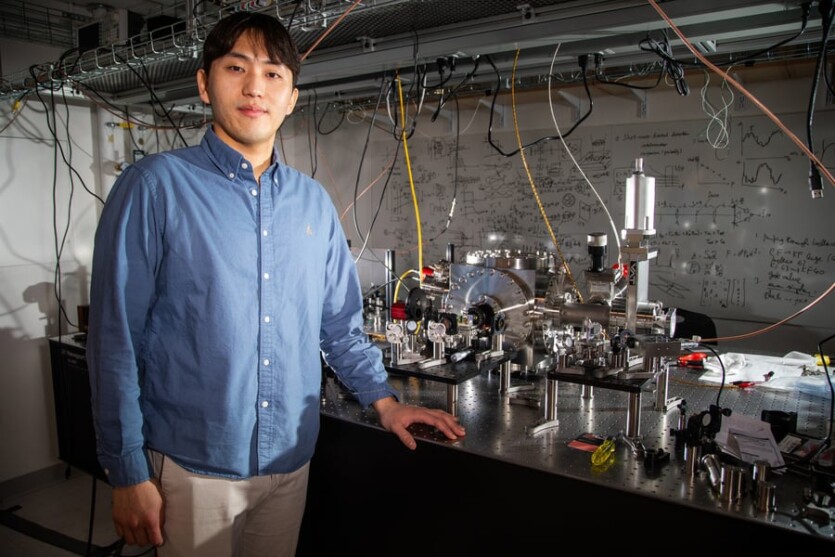
Researchers from The Massachusetts Institute of Technology (MIT) in the United States conducted an unusual experiment to confirm the quantum nature of gravity.
As part of the experiment, the scientists used lasers to cool a tiny torsion pendulum to almost absolute zero. In this way, they hope to find out whether gravity behaves like other quantum forces.
The question of how gravity works at the quantum level has long been of interest to the scientific community. So far, scientists have not been able to create a consistent quantum theory of gravity.
«Theoretical physicists have proposed many possible scenarios — from gravity originally classical to fully quantum, but the debate remains unresolved because we have never had a clear way to test the quantum nature of gravity in the laboratory. The key to answering this question lies in preparing mechanical systems that are massive enough to feel gravity, but quiet enough — quantum enough — to show how gravity interacts with them», — explains Doctor in the Department of Mechanical Engineering at MIT Dongcheol Shin.
In a recent experiment Dongcheol Shin and his colleagues used lasers to cool a tiny mechanical torsion pendulum. This is the first time that scientists have used lasers to cool such a mechanism in order to prove the quantum nature of gravity.

«Torsion pendulums have been classic tools for studying gravity since the famous Cavendish experiment in 1798. They have been used to measure Newton’s gravity G, test the inverse square law, and search for new gravitational phenomena. By applying laser cooling techniques originally developed for atoms to a centimeter-long torsion pendulum, we are attempting to bridge the classical and quantum worlds. This hybrid platform allows us to perform a new class of experiments — experiments that will finally allow us to test whether gravity should be described by quantum theory», — notes Dongchel Shin.
As part of the study, scientists used lasers to cool a pendulum no more than a centimeter in size from room temperature to 10 millikelvin or -273.14 °C using a mirror optical lever. According to Shin, this is a simple but powerful measurement technique. The laser beam is directed at the mirror, and even a slight tilt of the mirror makes the reflected beam to move noticeably on the detector. This magnifies small angular movements into easily measurable signals.
Meanwhile, the researcher emphasized that despite the simplicity of the idea, scientists have faced difficulties, as the laser beam can tremble slightly due to air currents, vibrations, or imperfect optical devices. This jitter can be mistaken for mirror movement and limit the ability of scientists to measure true signals. Because of this, the scientists used a mirror optical lever with a second, mirrored version of the laser beam to eliminate unwanted jitter.
«One ray interacts with the pendulum, and the other is reflected from a mirror with an angular cube, turning any jitter without picking up the pendulum’s motion. When the two beams are combined at the detector, the real signal from the oscillator is preserved, and the false motion from the laser jitter is canceled», — Dongcheol Shin emphasized.
This approach reduced the noise by a factor of a thousand, allowing the researchers to detect the motion with extraordinary accuracy, almost 10 times better than the pendulum’s own quantum zero fluctuations. According to Shin, the scientists managed to achieve quantum-limited accuracy below the zero-point motion of the pendulum, but achieving the actual ground quantum state remains the goal of the researchers.
The team of scientists plans to further enhance the optical interaction of — using an optical resonator that amplifies angular signals or optical capture strategies. These improvements could open the door to experiments in which two such oscillators interact only through gravity, which would allow us to directly test whether gravity is quantum or not.
Physicists get closer to «Theory of Everything» through a new explanation of gravity
The results of the study were published in the journal Optica
Source: SciTechDaily

Spelling error report
The following text will be sent to our editors: